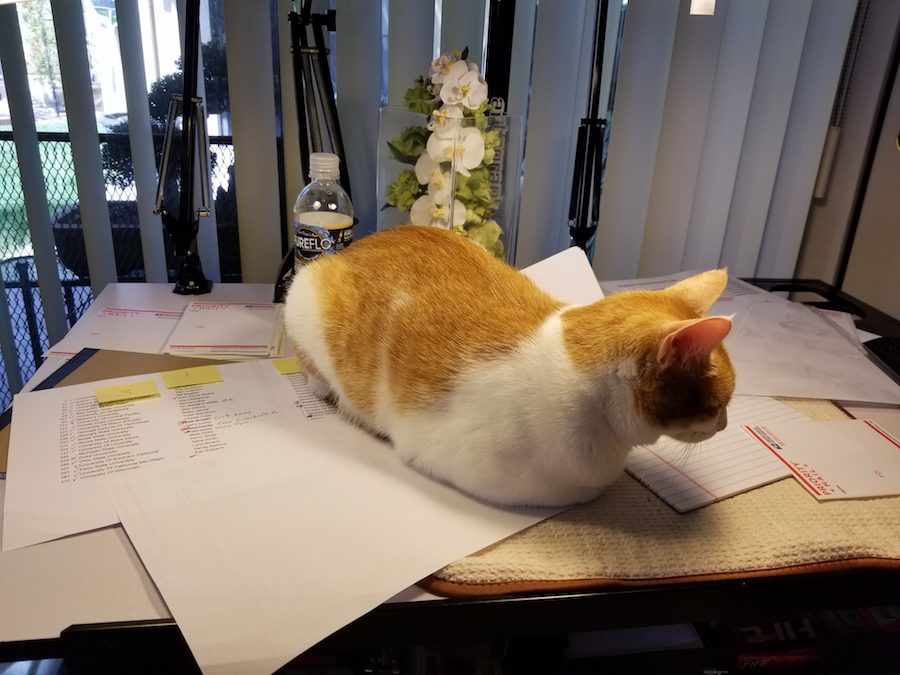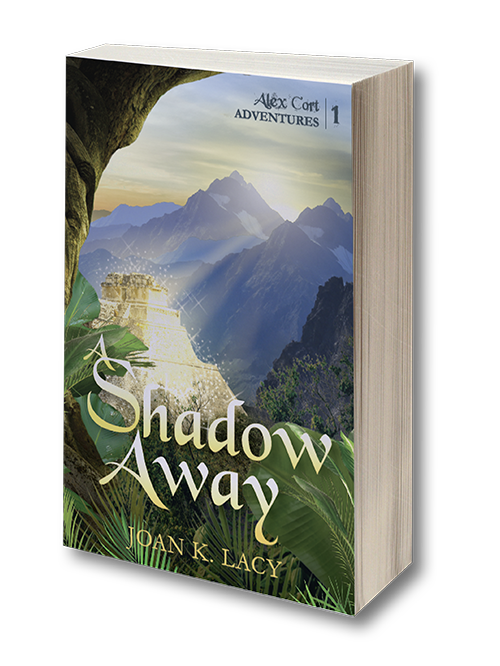It’s not easy finding quiet time to collect your thoughts. If you work all day, whether it’s at home or in the office, it’s hard to find enough time, right? I found the best thing to do is jot down ideas when they come to me, so I can add them to my manuscript later.
I chose to feature the picture of my cat in this post because even when you do manage to make it to your writing table — something will always pop up to distract you. My cat is one reason my work doesn’t get done! He just likes to sit in the middle of whatever I’m working on, wherever that is. You probably have pets that need your attention, or kids, a ringing door bell, or a spouse who wants you to help them “just for a minute.” But those of us who have the passion to write for the enjoyment of others, somehow find a way, don’t we!
First you must decide on the type of story you want to write, the genre. That will set the tone for how you will write your story. The next step is to decide if you’re a “seat of the pants” type of writer where the storyline, plot and dialogue flow through you to the computer screen or the written page. Perhaps you’re the other kind of writer who needs structure for you to build your story.
My first book, A Shadow Away, came to me the first way. I chewed gum as my mind churned out ideas, but I don’t recommend it. The images came easily, and the characters came to life for me. Their dialogue flowed so quickly, sometimes I had to scramble to keep up! If there was a glitch in the plot, I’d give it some time to unwind itself. And many times, the solution came from the adventurer Alex, eccentric archaeologist Andrew, or even my witch/person Angel herself.
The idea for this kind of story writing is to let your thoughts flow as the story almost seems to write itself. Even this way, though, you must follow the basic rules of story writing. Plot, character development, and a hundred little things that go into the making of a great manuscript are true for every style of writing. There are many books online and in your local bookstore that describe these and everything else you can learn to make your book a success. Do your research! It’s important.
The second way to write a story is with a storyboard. I use a white board from an office supply store and magnets to hold my scraps of ideas in place — which I number! One number for each magnet for every step of my story. I paperclip my notes together, too, in case they get knocked off the board. There are four basic plot points to build your story around. Some books say there can be even seven to twelve points and describe the different breakdowns. Choose the layout that works best for you. Plot development is important for both kinds of writers, and with a story board, which is what I use to write now, I can separate the plot point sections with different colored magnets. Works for me!
If you have anything to add or something you’d like to share, please feel free! Have a question? I’d be happy to answer the best I can. See you next week!
Video: What’s your day like as a writer?
If you enjoyed this post, please remember to “like” and share it with your friends! And use the sign up form below to be added to Joan’s email list so you never miss a post or update!



